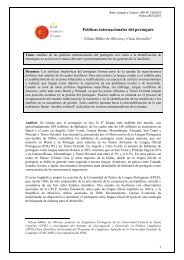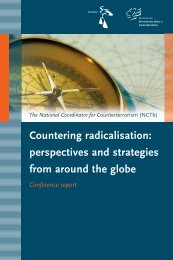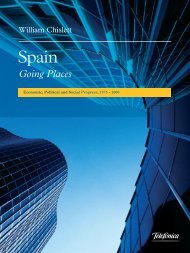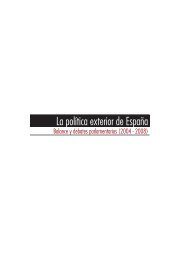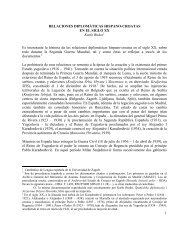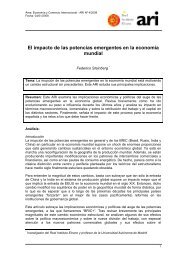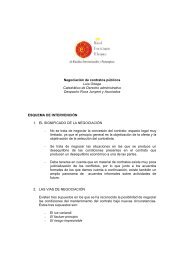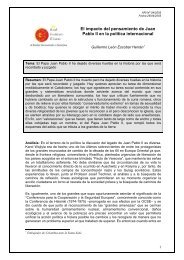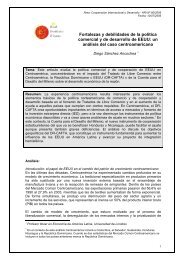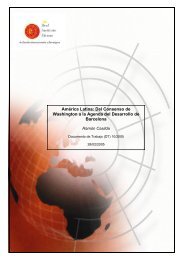Download PDF - Real Instituto Elcano
Download PDF - Real Instituto Elcano
Download PDF - Real Instituto Elcano
- No tags were found...
Create successful ePaper yourself
Turn your PDF publications into a flip-book with our unique Google optimized e-Paper software.
Women’s political participationThe elections in the 2005-2006 period yielded progress in the area of political participation bywomen. This began with the general elections in Honduras, where a new rule setting minimumquotas for male and female candidates (30%) led to an increase in participation by women inCongress. The figure went from 6% in the previous legislature to 23% in the current one. Thispositive effect continued in Chile, where the historic election of 2006 saw Michelle Bacheletbecome the first female president of that country. Bachelet has worked to bring more women intopolitical posts, establishing a formula mandating equal numbers of men and women in the 3,500jobs that are designated by the Chilean presidency.The number of women elected to the national congress rose in most countries. Although theincrease was most significant in Honduras, Peru’s increase from 18 to 29% is also worth pointingout. The success of women in this country is seen in the fact that the six most-voted lawmakerswere women. The legislature’s speaker is also a woman. In the rest of the countries, the percentageof women elected to Congress was lower, and in some cases it even declined, such as in Bolivia andColombia.Table 13. Latin America: Women in parliament (lower house or single chamber legislature)Before the lastAfter the last electionCountryelectionDifference% women % womenBolivia 19 17 –2Brazil 9 9 —Chile 13 16 +3Colombia 13 9 –4Costa Rica 35 39 +4Ecuador 16 20 +4El Salvador 11 17 +6Honduras 6 23 +17Mexico 23 23 —Nicaragua 21 RC* —Peru 18 29 +11Dominican Republic 17 20 +3Venezuela 10 18 +8* Results tallied as of 13/11/2006.Source: Inter-Parliamentary Union and the authorFinally we should point out the results of the elections to the Constituent Assembly in Bolivia. As aresult of an innovative electoral formula (three-name districts) combined with a gender quota of30%, a total of 33% of the people elected to the assembly were women. The assembly also electedan indigenous woman as its speaker.Other relevant aspectsTo one extent or another, the issue of political financing and its relation to corruption has beenpresent in the vast majority of the election campaigns. Scandals involving money in politics, risingcampaign costs, mainly the part spent on ads – above all on television – and the weakness oflegislation and control mechanisms have made this issue one of the main factors to consider when itcomes to guaranteeing election fairness and transparency.The increase in reports of illegal financing and its relation to political corruption scandals coincideswith a new and negative evaluation of Latin America by the organization called TransparencyInternational (TI). Its Corruption Perception Index (CPI) 22 allows for the countries of the regionto be classified into three groups. The first is made up of countries with high CPI levels placingthem among the top 50 countries on the list. They include Chile (a CPI of 7.3, placing it in 20thplace) and Uruguay (6.4 on the CPI, 28 th place). A second group of seven countries -- Colombia,22 The CPI is a compound index that measures public perceptions about corruption in 163 countries. It works on ascale of 0 to 10, with 0 being the highest level of perceived corruption and 10 the lowest.22



